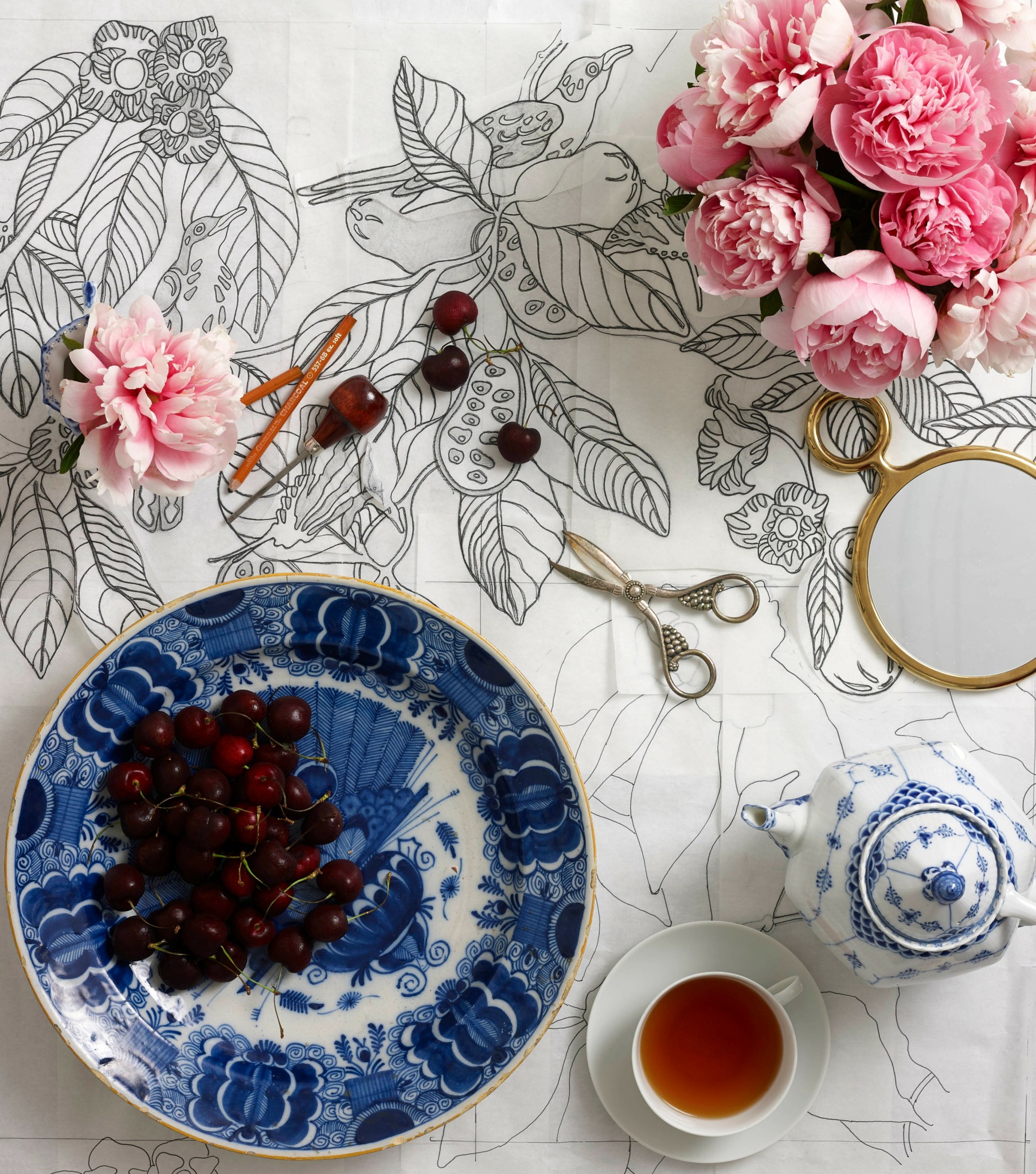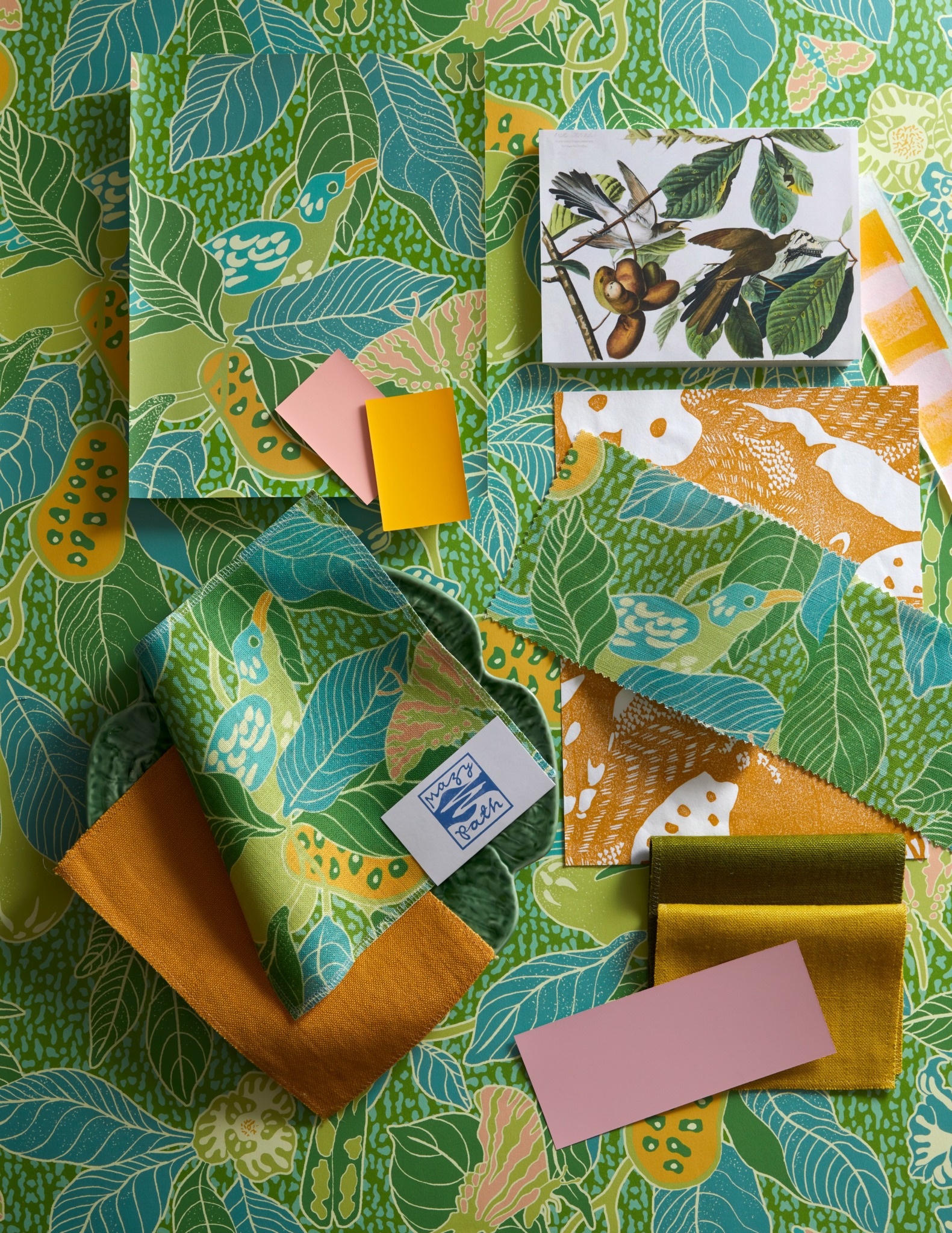We were lucky to catch up with Alexis Audette recently and have shared our conversation below.
Alexis, looking forward to hearing all of your stories today. Coming up with the idea is so exciting, but then comes the hard part – executing. Too often the media ignores the execution part and goes from idea to success, skipping over the nitty, gritty details of executing in the early days. We think that’s a disservice both to the entrepreneurs who built something amazing as well as the public who isn’t getting a realistic picture of what it takes to succeed. So, we’d really appreciate if you could open up about your execution story – how did you go from idea to execution?
Developing my own line of textiles and wallpaper was a long-held goal for me, but I spent many years working for other companies in the textile industry before I charted my own course. It was only when I felt confident that I both understood the business of textiles and had the financial stability to start my own business that I took the leap. My next challenge was determining the identity of my brand. In some ways, this was the hardest nut to crack. I had spent my whole career working for other people. What was my voice?
To answer this question, I began to build two story boards. The first board had images that inspired me: photographs, magazine tears, packaging. The second board pertained to the clients I hoped to gain; it had images of their homes, gardens, fashion choices, favorite restaurants, cherished museums, philanthropic interests. In the meantime, I gave myself free rein to read any books and articles that piqued my curiosity. As I built the boards and expanded my library, a landscape of lush color and decorative botanical patterns, rooted in nature writing, art history, and an ethos of conservation, began to emerge.
As I gained clarity around my visual inspiration, I also had to determine my artistic signature. What did the work actually look like? My inspiration story board was cluttered with images of linocut prints, a type of relief printmaking that I’ve always loved and that I practiced in art school. So I knew I wanted to create designs based on my own linocut prints, but I faced a crisis of confidence. What if, after working in the textile industry for so many years as a design director who delegated the actual artwork production to others, I had forgotten how to draw? So, I bought charcoal pencils and newsprint pads, held my breath, and started drawing. At first, I was tentative, so I set timers and forced myself to make gesture drawings of plants in quick succession. These exercises oiled my creative gears and built my faith in my own hand. The next step was to pull out my old linocut printmaking gouges and blades, purchase blocks, inks and paper, and get to work.
I began building the core concepts of Mazy Path in the summer of 2018 and launched the brand and my first collection in September of 2020. A two year incubation period is long, but I still go back to those boards and books whenever I feel the need to revisit my vision and purpose, and am grateful to have such firm foundations.

Great, appreciate you sharing that with us. Before we ask you to share more of your insights, can you take a moment to introduce yourself and how you got to where you are today to our readers.
My name is Alexis Audette, and I design Mazy Path, a line of botanical wallpapers, fabrics and fine art inspired by remarkable plants and based on my own linocut prints. I find inspiration for my work in contemporary nature writing and early Modernist art. The combination of botanical subject matter, art historical framing, and the distinctive mark of linocut printmaking gives my work its unique visual signature. My goal is to create art that inspires people to connect to the natural world.
I design Mazy Path in New York City, and the brand’s wallpapers, textiles, and pillows are made on demand at mills in Connecticut and Pennsylvania. I make the linocut prints by hand in New York, and the note cards are letterpress printed in New York as well. Mazy Path products are sold to members of the interior design trade and to design enthusiasts. The wallpapers and textiles can be purchased directly from Mazy Path and/or from my sales partners, trade showrooms in New York, Palm Beach, Atlanta, Ann Arbor and the San Francisco Bay Area. The linocut prints, pillows, and note cards can be purchased on the Mazy Path website.
Consideration of Mazy Path’s environmental impact guides the choices I make regarding design subject matter, manufacturing partners, financial institutions and the organizations that I support. Mazy Path wallpapers are printed on Forest Stewardship Council certified paper grounds with water-based latex inks, and Mazy Path fabrics are printed on 100% Belgian linen; I select linen grounds based on the sustainable properties of flax, a fiber that requires minimal pesticide and fertilizer inputs and no irrigation, and purchase them from a certified carbon-neutral mill. My banking partner does not lend to fossil fuel companies, private prisons, or gun manufacturers.
Mazy Path is committed to supporting Seed Savers Exchange, a leader in the movement to protect the biodiversity of our food system by preserving rare, heirloom, and open-pollinated varieties of seeds.

Can you share a story from your journey that illustrates your resilience?
I was supposed to launch Mazy Path at the International Contemporary Furniture Fair (ICFF), a renowned design industry tradeshow that’s hosted every year at the Javits Center in New York City. My first collection was ready, I had designed my booth, and I was so excited to share my brand and business with the world. However, in May of 2020, when the show was scheduled to be held, the Javits Center had transformed into a field hospital and the world had shut down.
I always knew that starting my own business would be taking a risk, but the idea that I might launch into the teeth of a pandemic had never occurred to me. I didn’t know what to do. I asked myself all sorts of questions, from “will ICFF give me a refund” to “why would anyone launch a business when the world is ending?”
As I pondered my next steps, I came across a book called The Well-Gardened Mind; The Restorative Power of Nature by the British psychotherapist Sue Stewart-Smith. A passage in the book helped give me the direction I needed in that moment. Stuart-Smith wrote: “When the future seems either very bleak, or people are too depressed to imagine one, gardening gives you a toehold in the future.” I was compelled by the concept of gardening as an act of faith. As an apartment dweller in New York City, I had limited access to an actual garden- even the community garden in my neighborhood was locked down- but I realized that I could continue to till Mazy Path’s soil and plant the seeds for future work. Mazy Path became my figurative garden, a pursuit in which I could create work inspired by the restorative power of nature. It was in this period that I developed my Treasure Tree collection, a group of patterns inspired by remarkable trees, from mangroves that assist with flood mitigation to elders that boost immunity, tame inflammation and curb stress.
In a difficult moment, I found resilience through inspiration from the natural world and the act of creating new work.

What’s a lesson you had to unlearn and what’s the backstory?
The benefit of starting your own business after working for a large company in the same field is that you know how the business and the industry you’re in operate. The drawback of such experience is that it’s hard to shift your mindset from working for a large company to a company of one. I continually find myself trying to reconcile the expectations I built working for a large business with the realities of working for myself.
For example, in my first few years of business, I sent out handmade holiday cards to clients as well as even the most remote prospects. As the business grew, every year I was making and sending more cards; for all of November, and eventually much of December, I disappeared into a flurry of card-making. This meant that I wasn’t actively promoting other items, such as artwork and note cards during the holiday season, and I was under-prepared for initiatives in the new year. After an especially hectic season two years ago, I realized that the opportunity cost of this approach was significant, and that I had little sense whether all the cards I was sending to prospects were opening new doors or landing in recycling bins. So, last year I made fewer cards and sent them to existing customers as a way to deepen those relationships, and I poured the time and energy I had won back into other parts of the business.
When you’ve worked for large companies, it’s easy to imagine that you’ll have comparable time and resources when you work for yourself. I periodically learn the hard way that this is not the case!
Contact Info:
- Website: https://mazypath.com
- Instagram: @mazy_path



Image Credits
Alexandra Rowley


